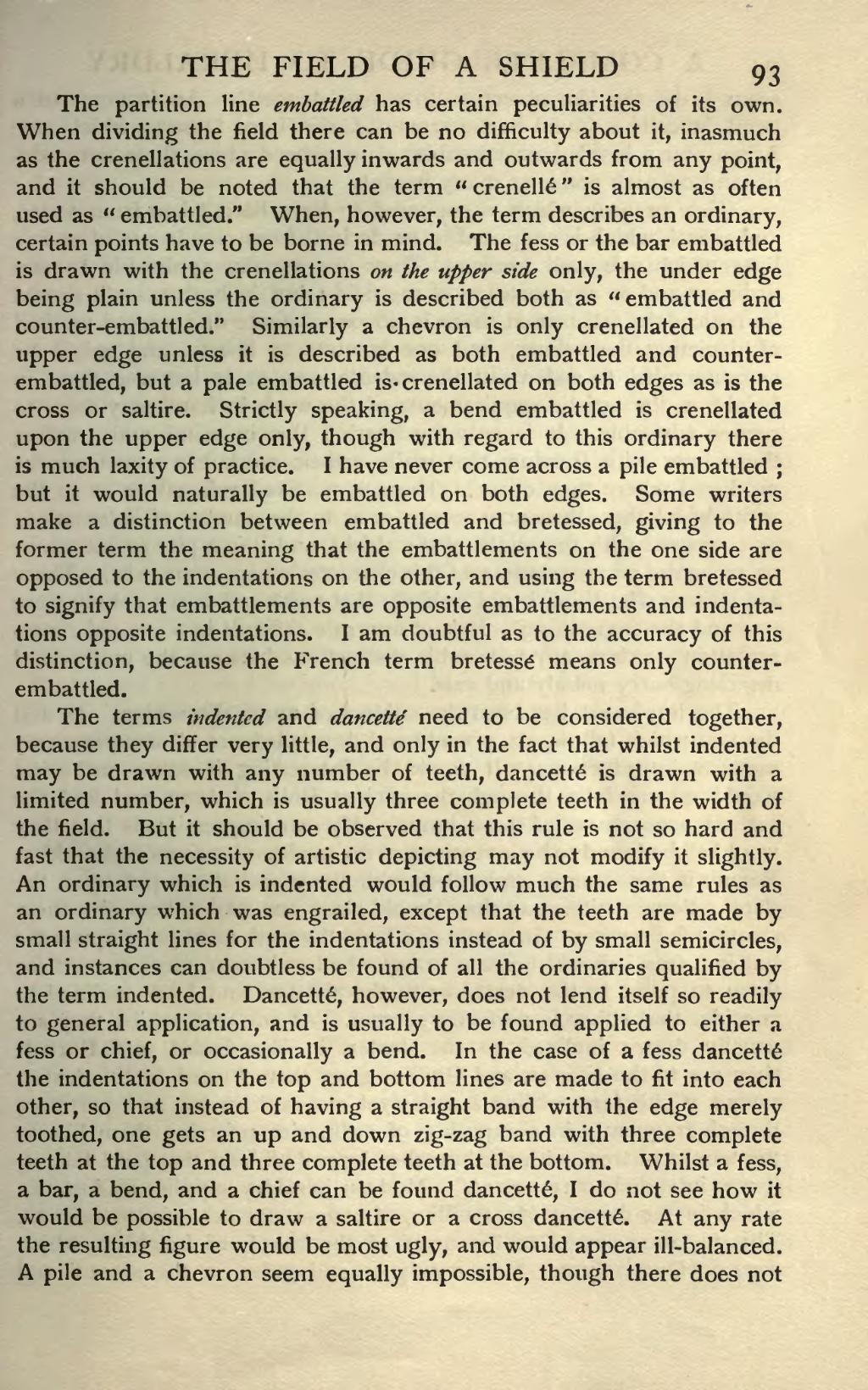The partition line embattled has certain peculiarities of its own. When dividing the field there can be no difficulty about it, inasmuch as the crenellations are equally inwards and outwards from any point, and it should be noted that the term "crenellé" is almost as often used as "embattled." When, however, the term describes an ordinary, certain points have to be borne in mind. The fess or the bar embattled is drawn with the crenellations on the upper side only, the under edge being plain unless the ordinary is described both as "embattled and counter-embattled." Similarly a chevron is only crenellated on the upper edge unless it is described as both embattled and counter-embattled, but a pale embattled is crenellated on both edges as is the cross or saltire. Strictly speaking, a bend embattled is crenellated upon the upper edge only, though with regard to this ordinary there is much laxity of practice. I have never come across a pile embattled; but it would naturally be embattled on both edges. Some writers make a distinction between embattled and bretessed, giving to the former term the meaning that the embattlements on the one side are opposed to the indentations on the other, and using the term bretessed to signify that embattlements are opposite embattlements and indentations opposite indentations. I am doubtful as to the accuracy of this distinction, because the French term bretessé means only counter-embattled.
The terms indented and dancetté need to be considered together, because they differ very little, and only in the fact that whilst indented may be drawn with any number of teeth, dancetté is drawn with a limited number, which is usually three complete teeth in the width of the field. But it should be observed that this rule is not so hard and fast that the necessity of artistic depicting may not modify it slightly. An ordinary which is indented would follow much the same rules as an ordinary which was engrailed, except that the teeth are made by small straight lines for the indentations instead of by small semicircles, and instances can doubtless be found of all the ordinaries qualified by the term indented. Dancetté, however, does not lend itself so readily to general application, and is usually to be found applied to either a fess or chief, or occasionally a bend. In the case of a fess dancetté the indentations on the top and bottom lines are made to fit into each other, so that instead of having a straight band with the edge merely toothed, one gets an up and down zig-zag band with three complete teeth at the top and three complete teeth at the bottom. Whilst a fess, a bar, a bend, and a chief can be found dancetté, I do not see how it would be possible to draw a saltire or a cross dancetté. At any rate the resulting figure would be most ugly, and would appear ill-balanced. A pile and a chevron seem equally impossible, though there does not
